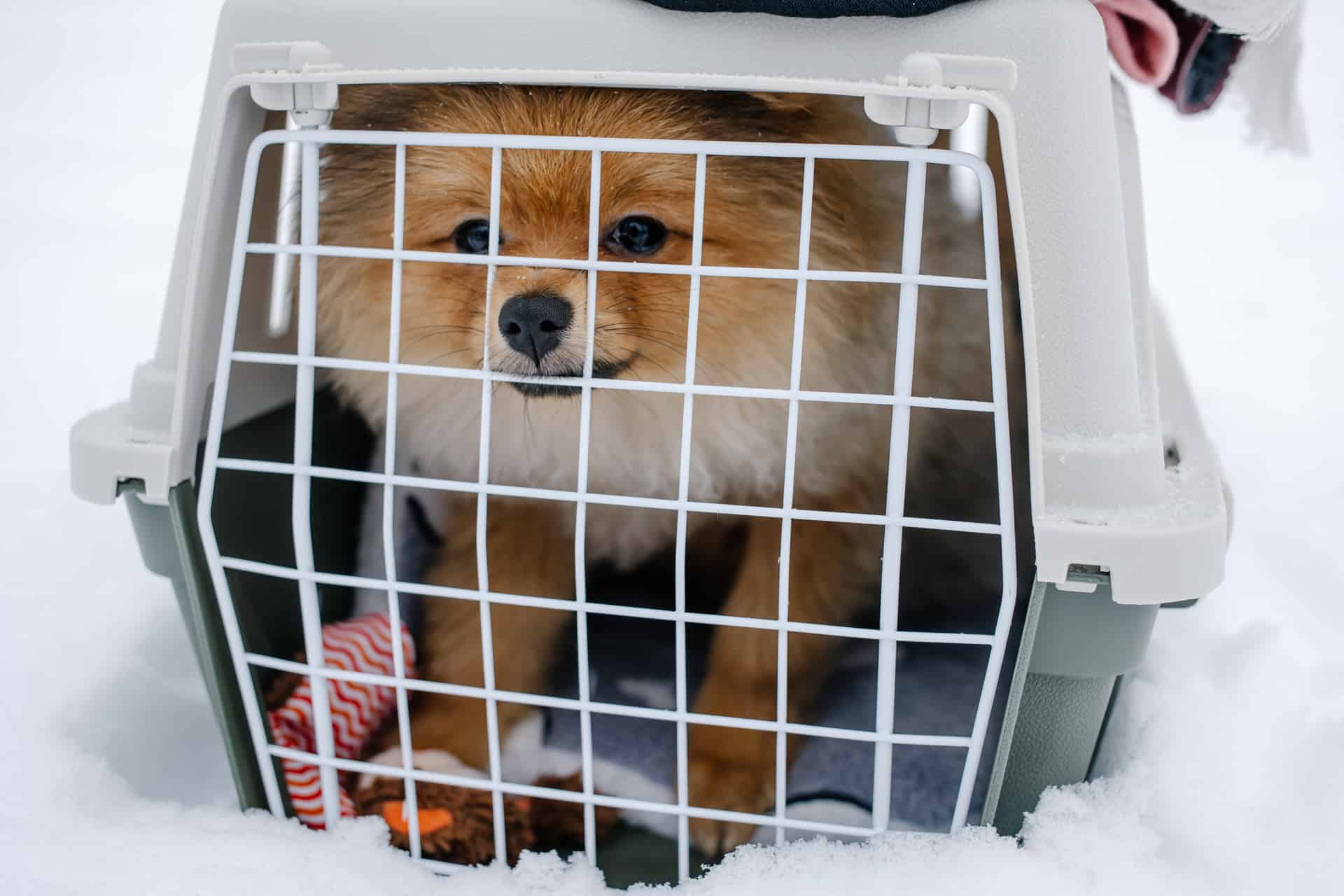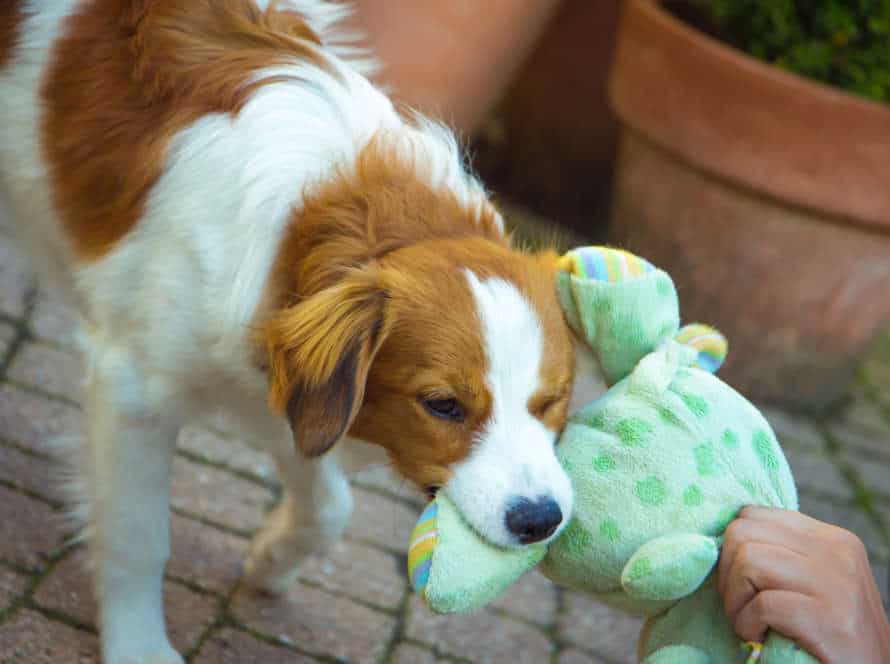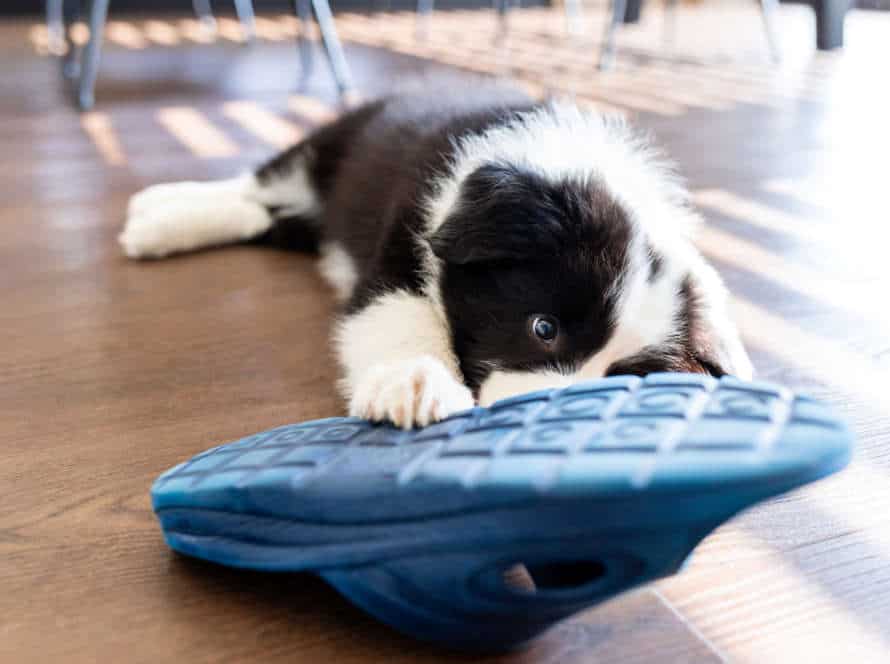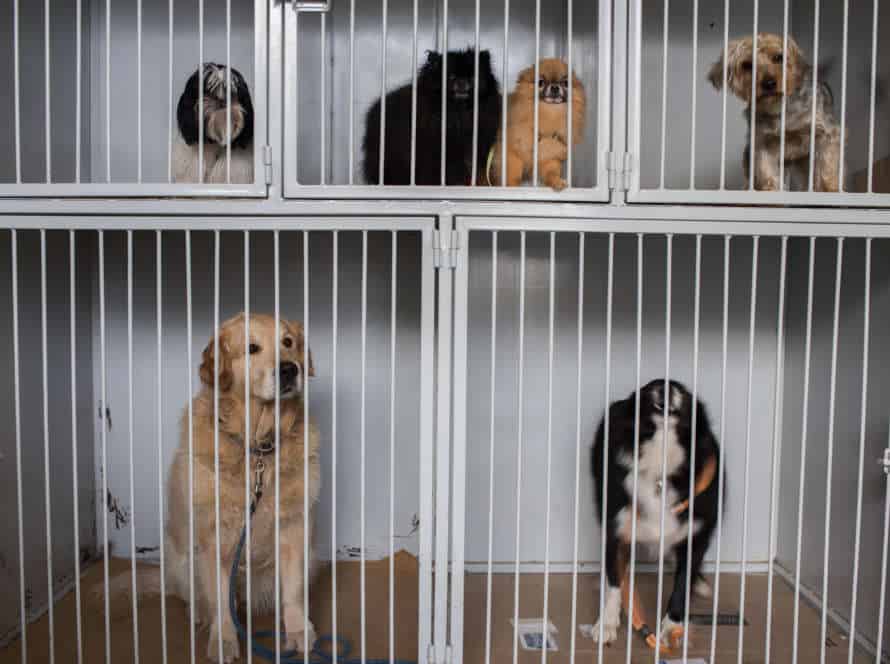When to Seek Professional Help for Crate Training Challenges
Crate-training your pup can be tough. Even if you do your best, your pup may still not get it. Here are signs that you need to ask a pro for help:
- If your pup whines, barks or paws a lot at the crate, it’s time to call a trainer.
- If your pup still has accidents, even though you’ve followed all the rules, it means there’s a deeper issue.
- If you’ve tried everything and your pup still avoids the crate or acts anxious, a pro is needed.
A certified trainer can help you figure out the problem and use the correct training methods to stop the crate-training struggles.
Understanding Crate Training
Crate training is an excellent way to house train your pup. Knowing the basics – like the right crate size, types of crates, and the training process – is key for a successful crate experience.
Challenges can arise during training, so it’s important to know when to seek professional help. Let’s learn more!
The Benefits of Crate Training For Your Dog
Crate training is a great way to train your dog. It has lots of advantages! Here are some of them:
- Provides a space that’s safe and secure. Dogs like enclosed places – like a crate – because they feel safe and protected.
- Helps with potty training. Dogs don’t want to soil where they sleep. Crate training helps them learn to hold their bladder and bowels until they’re taken outside.
- Prevents destructive behavior. Without supervision, dogs can do things like chew on furniture. A crate stops them from accessing and damaging your stuff.
- Makes travels easier. Dogs that know crate training have a familiar, safe space for when they’re being transported.
If crate training is a struggle, seek professional help. A certified dog trainer can identify any issues and create a plan that works for you and your pup.
The Components of Successful Crate Training
Crate training can be a great way to teach your pup proper behavior and give them a safe space. Before starting, there are a few components to keep in mind:
- Pick the right sized and type of crate.
- Introduce it in a positive way.
- Increase the time spent in it gradually.
- Use positive reinforcement to get your dog to enter and stay in the crate.
- Don’t use punishment or negative reinforcement techniques.
Crate training can be effective, but some pups may require extra help. If your pup shows signs of anxiety or aggression toward the crate, seek professional assistance.
The Importance of Patience in Crate Training
Crate training is an important part of giving your pet a safe and secure environment. However, it takes time and patience. Here are 3 reasons why patience is key:
- Introducing your pet to a new space takes time. It can be daunting or confusing for them. Patience helps them feel more comfortable.
- Positive reinforcement is necessary. Patience helps correct unwanted behavior and encourages the desired behavior.
- Every pet is different. It takes patience to tailor a plan for each one.
If you’re still having trouble crate training, it’s time to get professional help.
Signs of Crate Training Challenges
Crate training can be a great experience for you and your pet. But, there are signs that suggest your pet may need some extra help. Let’s look at these signs and when it’s best to get professional help.
Your Dog is Reluctant to Enter the Crate
If your pup won’t enter their crate, it’s a sign of crate training difficulties. Patience & reward-based training can help. Here’s how:
- Give treats & toys to entice your dog into the crate.
- Feed meals in the crate to get a positive reaction.
- Choose the right-sized crate – not too big or too small.
- Cover the crate with a blanket or towel for a cozy feel.
- If your pup still won’t go in after several attempts, seek professional help from a certified trainer or behaviour specialist for added guidance.
Your Dog Whines or Barks Excessively in the Crate
Is your pup whining or barking excessively in the crate? It could be a sign of crate training problems. Crate training is great, but it can be overwhelming for your dog if not done right. Here are some reasons why your pup may be barking/whining:
- Anxiety and fear caused by being away from you.
- The crate might be too small or too large.
- Boredom from being locked up for too long without activities.
If your pup struggles with crate training, it’s time to get help from a dog trainer or animal behaviorist. Professional help will improve your pup’s behavior and make crate training easier for both of you.
Your Dog Hates Being Alone
Crate training is a must for dog owners. But, it can be hard! Some dogs may feel uneasy or worried when left alone in the crate. This can be tough for both pup and pet parent. Here are a few clues your pup may be having crate issues:
- Excessive barking, whining, or howling when left alone.
- Chewing, digging or wrecking things due to stress or fear.
- Showing aggression or weird behavior when near the crate or interacting with the owner.
- Peeing or pooping in the crate, even if housebroken.
If you see these signs, get help from a professional. A certified dog trainer or behaviorist can figure out the problem and work out a training plan that’s right for your pup.
Essential Crate Training Tips
Crate training can seem intimidating. But don’t worry! This article offers some helpful tips. It also looks at when it’s wise to get an expert trainer. Here’s how to make crate training simpler.
Create a Positive Association With the Crate
Crate training is a must for pup owners. But, it can be difficult for your dog to like it. Fortunately, there are many ways to make the crate a positive experience! Here’s how:
- Introduce your dog to the crate slowly. Leave the door open and let them explore it in their own time.
- Place treats and toys in the crate, to get your pup to enter it willingly.
- Reward them for entering and staying in the crate with praise and treats.
- Make the crate comfy with a soft blanket or pad. Place it somewhere quiet and cosy.
If your pup still has issues with crate training after several weeks of effort, it’s time to look for help from a professional dog trainer.
Gradually Increase Time Alone in the Crate
Crate training your pup is key for their comfort and safety. If it’s not going as planned, you may need a professional. Here’s some help for starters:
- Gradually introduce the crate with lots of sniffing and exploring.
- Make it inviting with a bed or blanket.
- Treats and praise will help your dog enter willingly.
- Start with short periods and gradually increase the time.
- Don’t force and never use it for punishment.
- If things get tough, seek help from a pro. Pro Tip: Crate training takes time and patience, but it’s worth it to keep your pup safe and secure.
Utilize Toys or Treats for Positive Reinforcement
Use treats or toys to positively reinforce your furry friend’s crate training. Here are a few tips:
- Offer high-value treats only when they enter the crate willingly.
- Never force them in the crate, as it could create negative associations.
- Make crate time fun by giving them a toy or chew.
- Increase the time they spend in the crate gradually, starting with short intervals.
If you face challenges during crate training, like whining or destructive behavior, seek help from a certified dog trainer.
Patience and consistency are key for successful crate training!
When to Seek Professional Help for Crate Training Challenges
Crate training can be great for pet owners who want to potty-train their pooch. But it can be tough. Especially if your pup won’t settle in their crate or more problems come up. Knowing when to get help is key.
Let’s look at signs that you need professional help with crate training:
Long-Term Crate Training Challenges
Crate training is essential for your pup’s safety and good behaviour. But, it can be hard to manage in the long-term. Here are some signs that you need pro help for crate training troubles:
- They bark, bite, or growl when put in the crate.
- They still pee in the crate, even if they’ve already gone outside.
- They pant/sweat a lot in the crate for long periods.
- They’ve been in crate training for a while, but you don’t see any improvement.
If any of these signs are true, you need to get pro help with crate training! A pro trainer can figure out what your pup needs and help you create a good training plan.
Inconsistent Crate Training Outcomes
Crate training is a great way to housebreak your pup, and give them a safe place. But sometimes, even following best practices doesn’t work. That’s when you need expert help. Here are some times when a pro should be consulted:
- If your doggo drools, vomits, or poops excessively during crate training.
- If you’ve been trying the recommended techniques, but no progress is being made.
- If your pup is destructively biting or chewing while in the crate.
Pro tip – Patience is key. Every pup is different and the right solution may take time to find. Professional help can identify issues and provide tailored solutions for your pup’s crate training.
Aggressive or Dangerous Behaviors in the Crate
Crate training your dog can be tough if they display aggressive or dangerous behaviors. Signs of aggression include growling, snarling and snapping. Signs of danger include drooling, vomiting and diarrhea.
If these behaviors persist despite trying out various techniques, seek professional help. A dog trainer or animal behaviorist can help identify underlying causes and provide positive reinforcement techniques. They will also give personalized tips to make your pup feel safer and secure in the crate, while avoiding harm to themselves or anyone else.
Finding a Professional Dog Trainer for Crate Training
Crate training can be tough. If you don’t have the right experience, you may feel overwhelmed. If your dog is having a hard time, it may be best to get professional help. Let’s look at the options for finding a pro to help you with crate training.
Referrals from Trusted Friends, Family Members, or Veterinarians
For crate training, referrals from trusted sources can be super valuable. Friends, family and vets can help you find the right trainer for your pup. Do your own research too! Look for a certified trainer in animal behavior or crate training. Read reviews to get a sense of their approach and success rate. If you’re having troubles with crate training, watch for signs like excessive barking or whining, destructive behavior, or extreme anxiety. A professional trainer may be the best solution for you and your pup.
Research Prospective Dog Trainers Online
If you’re getting a pro dog trainer for crate training, start with researching them online. This can help you find and compare different trainers who specialize in crate training and pick the perfect one for your pet. Here are some tips for researching prospective dog trainers online:
- Look for trustworthy sources like professional orgs or review websites to get a list of certified trainers in your area.
- Read reviews and testimonials from their past clients to get an idea of their experience and success rate.
- Check their qualifications and experience and make sure their methods match your training goals and values.
- Once you’ve picked a few trainers, schedule consultations or phone calls to discuss your pet’s needs and ask any questions.
Remember, seeking help early on can prevent long-term behavior problems and make sure you and your furry friend have a great relationship.
Ask for Credentials, Client Referrals, and Training Approaches
When looking for a pro to help with crate training your pup, it’s key to ask for proof of expertise, client references, and info on their methods. To make sure you pick the best trainer for your pet, here are some tips:
- Look for experience and certifications: Seek out a trainer with knowledge and certification in dog training. They should use positive reinforcement for crate training.
- Ask for past client references: Get the contact details of past customers and check in with them about their experience with the trainer.
- Inquire about training approaches: Ensure the trainer follows a humane and scientific way of crate training. Avoid trainers who use punishment or hard techniques to train your dog.
By doing these things, you’ll be able to find a pro dog trainer who is skilled and has the right approach to help with crate training challenges.
Frequently Asked Questions
Q: How do I know if I need professional help with crate training my dog?
A: If your dog is showing extreme signs of anxiety or fear towards the crate, if they consistently soil or destroy the crate, or if your previous attempts at training have not been successful, it may be time to seek professional help.
Q: What kind of professional should I seek help from for crate training?
A: Look for a certified dog trainer or behaviorist with specific experience and expertise in crate training. You can research trainers in your area and ask for referrals from local shelters or veterinarians.
Q: How can a professional help with crate training challenges?
A: A professional can assess your dog’s behavior and develop a personalized training plan tailored to your dog’s specific needs. They can also provide guidance on crate placement, size, and duration of training sessions.
Q: Will professional help speed up the crate training process?
A: It depends on the individual dog and their behavior. Some dogs may require more time and patience to adjust to the crate, while others may need more intensive training. A professional can help identify and address any challenges that may be slowing down progress.
Q: How much does professional crate training help cost?
A: The cost of professional crate training can vary widely depending on the trainer, location, and training needs. It’s important to research and compare prices and services offered before choosing a trainer.
Q: How long does professional crate training take?
A: The length of professional crate training can vary depending on the dog’s behavior and individual needs. Some dogs may require only a few training sessions, while others may need several weeks or even months of consistent training and behavior modification techniques.







